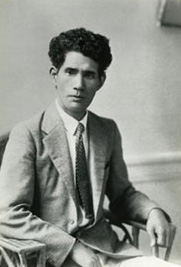 | ProfileTomita Keisen 冨田溪仙 (1879 - 1936) was born inHakata (Fukuota). His given name was Singoro. He studied the Shijōstyle of painting in Kyoto with Tsuji Kakō (1871-1931). He also studied Heian Buddhist painting and nanga(traditional Japanese painting). He exhibited in the official Bunten,Teiten and Inten exhibitions. Exhibited paintings with Saiko Nihon Bijutsuin(Reorganized Japan Fine Art Academy) in 1915, and became a member in1916. He is credited with creating a new style of kacho-ga and was oneof the foremost painters of his generation. |
Ubune - First Painting Admitted to Bunten Exhibition
Source: Abstract in English from "The enlightenment of Keisen" (Papers Read at the 3rd National Congress) [in Japanese], FURUKAWA Toshitsugu, appearing in the journal of The Japanese Society for Aesthetic, Volume 33, Dec. 31, 1982. Ubune (Cormorant Fishing Boats) 1912 The National Museum of Modern Art, Kyoto | Tomita Keisen (1879, Fukuoka-1936, Kyoto) was a unique painter activein the Inten of Taisho and early Showa eras. Trained in the Kano andShijo School traditions, Keisen was well versed in the traditionalstyle of painting. After about 10 years of trial and error, heestablished his own style with Ubune (Cormorant Fishing Boats), which was the first paintingever admitted to the Bunten in 1912 and brought him fame. About onehundred sketchbooks and notebooks (diary, comments on art and sketches)of the period remain and show a decisive role of his travelingexperiences (six trips in fourteen years) in establishing his personalstyle. His Taishinmanga-kiko painted in haiku-picture style after histrip to Taiwan and the South of China in 1909 was highly praised byhaiku poet, Kawahigashi Hekigodo, thereby Keisen was much encouraged topursue in this direction. But he gradually experienced a stylisticchange from haiku-picture-like expressions towards those of nangastyle. Yet what made him unique is that he did not depend on old,conventional and patternized motifs inherent in nanga paintings, but onsketches drawn on the spot. To liberate himself from thelong-established traditionalism, Keisen had recourse to his travelingexperiences, and his rough and rapid ink sketches based on his natureobservation were employed to compose exhibition pieces of which thefirst instance was Ubune. |
Exhibition "Tomita Keisen Commemorating the 130th Anniversary of His Birth"
Fukuoka Art Museum October 10 - November 23, 2009.Tomita Keisen 冨田溪仙 (1879 - 1936) born in Hakata, was an activeJapanese-style artist living in Kyoto. Yokoyama Taikan acknowledged histalent. Although Tomita Keisen was living in Kyoto, he exhibited hisworks at Inten Exhibition in Tokyo, and he imbued the Japanese artworld with his unique talent in the Taisho and Showa periods in Japan.It has been approximately 30 years since a grand-scale retrospectiveexhibition was held in his hometown and will comprehensively introducehis lifetime representative works. It will present great opportunitiesof reconfirming the fascination manifested in his broad-minded freespirit and the significance of it.
